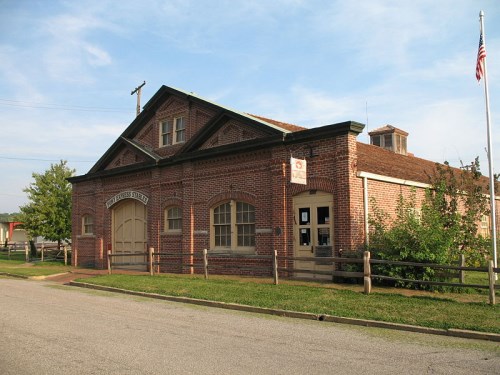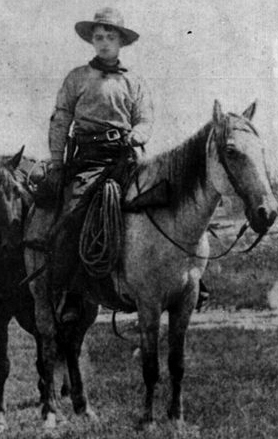



Payments by
The image of the intrepid messenger riding alone through all kinds of weather, across prairie and desert and over mountains in all kinds of weather is certainly enough to fire the imagination. But maybe the Pony Express looms large in our national psyche because it was a monumental undertaking--an intercontinental message relay on a scale that had not been seen since the days of ancient Rome.
The threat of Civil War made faster communications between east and west coasts imperative, and the Pony Express--by carrying communications and news of the day between them-- actually played a critical role in solidifying ties between the Union and California in the years leading up to the Civil War. To William H. Russell, William B. Waddell, and Alexander Majors--partners in a large freight company transporting supplies to army outposts out west--the need for faster mail service looked like an opportunity to wrest the lucrative overland mail contract away from the Butterfield Stage Company. They hoped to prove that men on horseback, traveling a shorter, north-central route, would be able to deliver the mail faster and more safely.
Riders departed simultaneously from Sacramento and St. Joseph, Missouri, and traveled 250 miles in a 24-hour day. The first westbound trip took 9 days and 23 hours, the eastbound trip, 11 days and 12 hours. The Express relay consisted of over a hundred stations, 80 riders and 400 to 500 horses. Each leg of the "relay" was about ten miles long, since that was about the maximum distance a horse could travel at a gallop. A rider blew his bugle as he approached the station, so the stationmaster would know to have a fresh horse, loaded with water sack, etc. The rider then had only to take his mail sack (called a mochila), sling it over the horse's back and swing into the saddle, sitting on top of the mail sack and continuing on his way. Riders usually traveled 75 to 100 miles before another rider would take over, riding day and night, in all kinds of weather. However there are documented cases where no fresh rider was available due to an emergency, and riders stayed in the saddle for twenty hours. They were paid $25 a week--not much by today's standards--but the average laborer in the early 1860s earned only $1 per day for 12 hours work.
The Pony Express had been in operation only two and a half months when Congress passed a bill to subsidize the building of a transcontinental telegraph line between the Missouri River and the Pacific Coast. The completion of the telegraph line would sound the death knell for the daring horseback enterprise. But while the line was being constructed, it was business as usual for the Pony Express. The riders carried letters and newspapers from Saint Joseph to Sacramento and back, but telegrams were carried only between the two ends of the line already in construction.
As well as it worked for delivering the mail, the Pony Express was never a financial success, losing hundreds of thousands of dollars before it ceased operations in October, 1861. But it endures as a symbol of American pioneer spirit and determination, and the hoofbeats of the Pony Express rider still echoes through the imaginations of every lover of the American West and its history.
The Pony Express suffered only one fatality--a rider killed by hostile Indians--and lost only one bag of mail. Pony Express riders logged a total of 650,000 miles.
The threat of Civil War made faster communications between east and west coasts imperative, and the Pony Express--by carrying communications and news of the day between them-- actually played a critical role in solidifying ties between the Union and California in the years leading up to the Civil War. To William H. Russell, William B. Waddell, and Alexander Majors--partners in a large freight company transporting supplies to army outposts out west--the need for faster mail service looked like an opportunity to wrest the lucrative overland mail contract away from the Butterfield Stage Company. They hoped to prove that men on horseback, traveling a shorter, north-central route, would be able to deliver the mail faster and more safely.
Riders departed simultaneously from Sacramento and St. Joseph, Missouri, and traveled 250 miles in a 24-hour day. The first westbound trip took 9 days and 23 hours, the eastbound trip, 11 days and 12 hours. The Express relay consisted of over a hundred stations, 80 riders and 400 to 500 horses. Each leg of the "relay" was about ten miles long, since that was about the maximum distance a horse could travel at a gallop. A rider blew his bugle as he approached the station, so the stationmaster would know to have a fresh horse, loaded with water sack, etc. The rider then had only to take his mail sack (called a mochila), sling it over the horse's back and swing into the saddle, sitting on top of the mail sack and continuing on his way. Riders usually traveled 75 to 100 miles before another rider would take over, riding day and night, in all kinds of weather. However there are documented cases where no fresh rider was available due to an emergency, and riders stayed in the saddle for twenty hours. They were paid $25 a week--not much by today's standards--but the average laborer in the early 1860s earned only $1 per day for 12 hours work.
The Pony Express had been in operation only two and a half months when Congress passed a bill to subsidize the building of a transcontinental telegraph line between the Missouri River and the Pacific Coast. The completion of the telegraph line would sound the death knell for the daring horseback enterprise. But while the line was being constructed, it was business as usual for the Pony Express. The riders carried letters and newspapers from Saint Joseph to Sacramento and back, but telegrams were carried only between the two ends of the line already in construction.
As well as it worked for delivering the mail, the Pony Express was never a financial success, losing hundreds of thousands of dollars before it ceased operations in October, 1861. But it endures as a symbol of American pioneer spirit and determination, and the hoofbeats of the Pony Express rider still echoes through the imaginations of every lover of the American West and its history.
The Pony Express suffered only one fatality--a rider killed by hostile Indians--and lost only one bag of mail. Pony Express riders logged a total of 650,000 miles.
The Pony Express
Nothing about the Old West has captured our imaginations like the lone Pony Express messenger galloping across the frontier with a mail pouch he would defend with his life. Despite its fame, this glorious enterprise operated for only eighteen months, from April 1860 to October, 1861, when the completion of coast-to-coast telegraph lines made the horseback couriers obsolete.
The Pony Express stables in St. Joseph, from a 2006 poster, licensed for display by Attribution Sharealike, Creative Commons 2.5
Pictured above: Pony Express Rider, circa 1861. Riders had to be able to stand the rigors of riding a galloping horse for many hours in all kinds of weather--and could weigh no more than 125 pounds. They carried a 20-pound mail sack, a water bag, knife, revolver, Bible and a bugle for alerting the station master to have a fresh horse ready.
Above: Simpson Springs, Utah Pony Ex-press Station, public domain, courtesy of U.S. National Park Service.
Fairbanks Pony Express Monument, Salt Lake City, UT, public domain, U.S. National Park Service

Site Index
www.GunsOfOld.com -- History of the Pony Express

Questions? Call or Text:
479-276-0434, Or Email:
479-276-0434, Or Email:


A 4G Company
Internet Store
Internet Store
Copyright © 2008-2020 4G Company dba www.gunsofold.com
























































